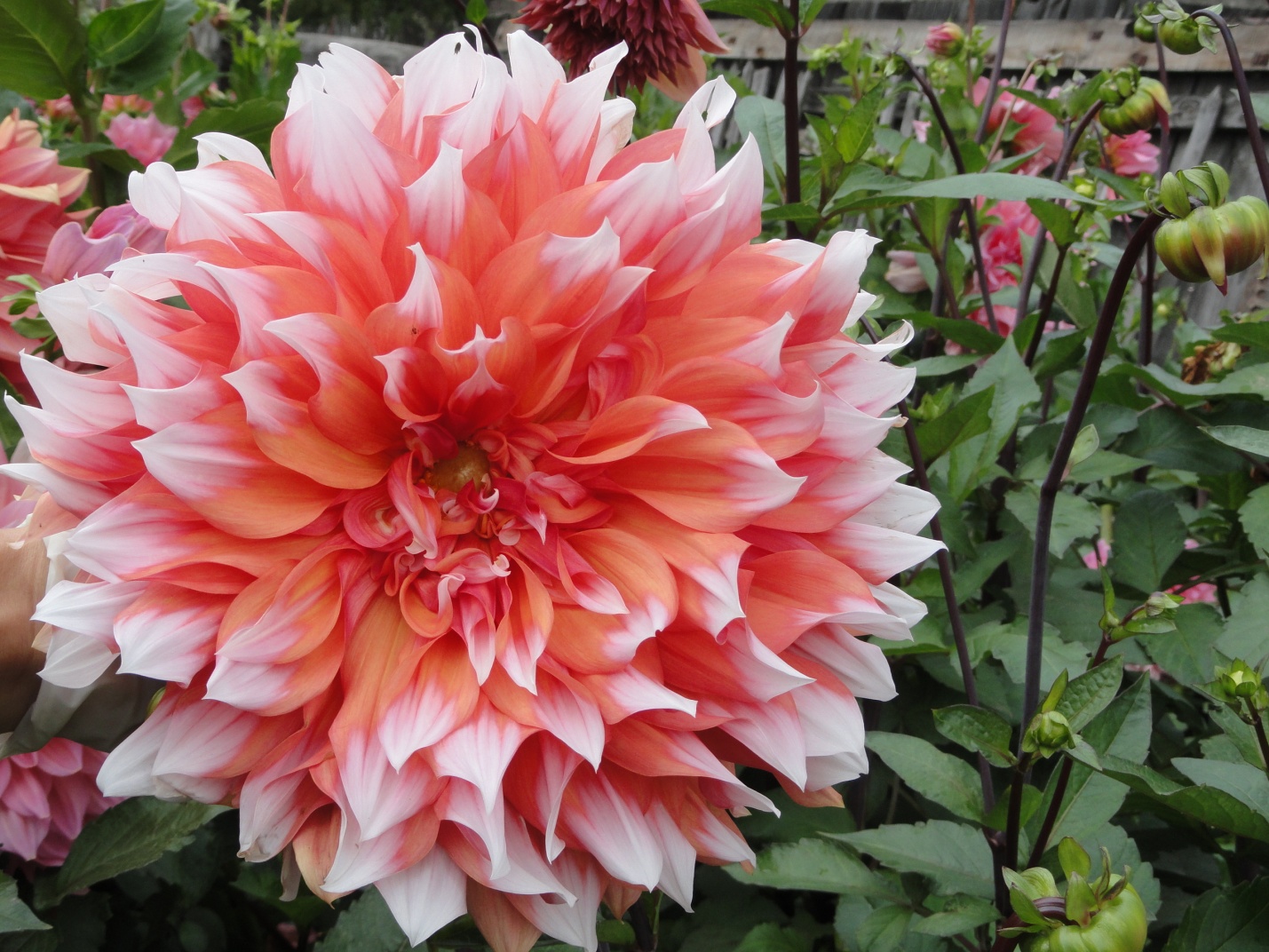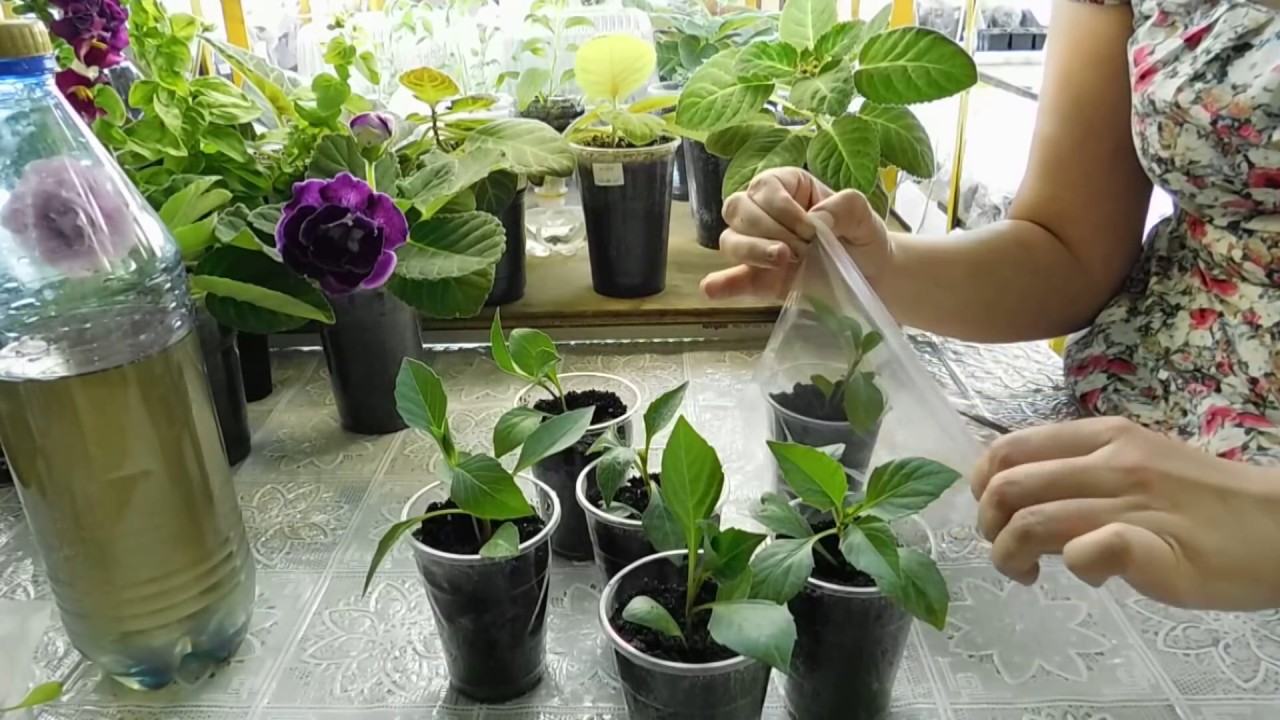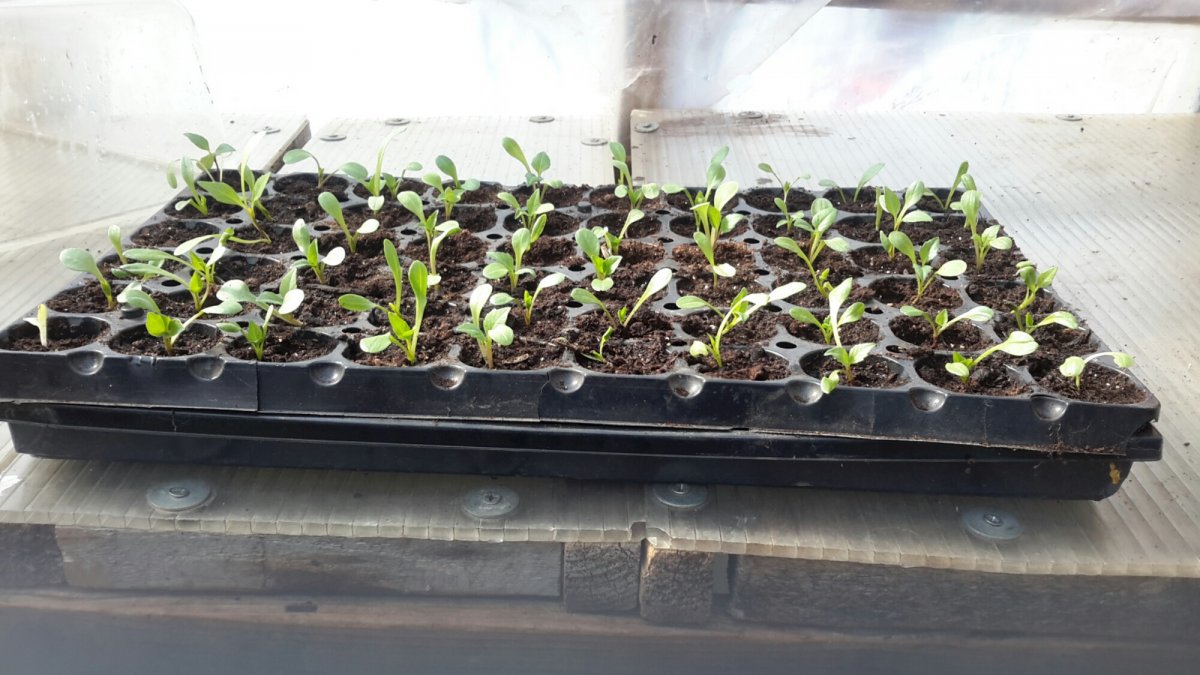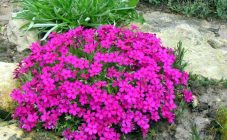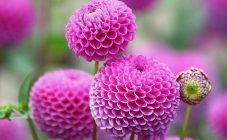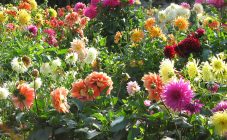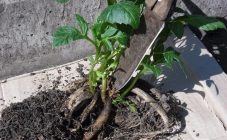Content:
Dahlia flowers adorn flower beds throughout the summer and delight with their luxurious flowering until late autumn. Due to its beauty, variety of bright colors and unpretentiousness, dahlia cultures are found in almost every garden, cottage or front garden. Depending on the growing period, dahlias are divided into two types: annual and perennial crops. The article will talk about perennial varieties, the most popular varieties of flowering plants.
About agricultural technology of culture
The agrotechnology of plant breeding is quite simple and even a novice florist can do it:
- Soil requirements. It is not recommended to choose places for planting flowers located in swampy and damp areas, where root tubers can rot. A flower crop will not bloom well in the shade of large trees, as they dry out and draw moisture and nutrients from the soil. It is advisable to plant perennial dahlias in areas with well-fertilized and cultivated soil. The increased demands on the quality of the soil is explained by the intensive formation of the root tubers of the plant from the beginning of planting in the ground. Such active growth is associated with the absorption of large amounts of the elements nitrogen, potassium and phosphorus from the soil. Perennial dahlias take root on any type of soil. Oii grow equally well on black soil, loam, sandy soil, so they can be used to decorate any area.
- Illumination. Perennials delight with their lush flowering if they are planted in places sufficiently illuminated by the sun's rays, well protected from cold drafts. Although, due to the lack of free space in sunny places of the cottage or front garden, plants have to be grown in shaded places. Different illumination affects the size of the flower and the brightness of the color. It has been noticed that dahlias grown in partial shade have a significantly longer flowering period.
- Humidity. For the lush flowering of dahlia flower crops, it is necessary to create a moderate humidity regime. Timely and abundant watering creates the necessary conditions for the formation of beautiful and large inflorescences. In hot weather, moisture from the soil quickly evaporates, so the soil is mulched with peat or dry grass. Dahlias are best watered in the evening, after the summer heat has subsided. Plants are also very responsive to the "summer shower", such spraying can be carried out several times a day.
Reproduction of culture
Dahlias are grown in several ways: by dividing the tubers, by seed, or by cuttings.
Tuber propagation
After removing the rhizomes in the spring from the storage site, it is necessary to carefully examine the plants, remove dead and dried parts. Before the procedure for dividing root tubers, they must be lowered for disinfection in a weak 15% solution of potassium permanganate for 30 minutes.Tubers are divided into parts with hands or with a knife so that on each division one or two buds are obtained, placed on the root collar. When cutting the tubers with a knife, cross divisions close to the seedlings should be avoided, as they can be damaged. It is important that the knife used is sharp enough to disinfect after each cut.
Sections of tubers are treated with a manganese solution or sprinkled with chopped activated or charcoal. The tubers are dried and planted in open ground or in pots with soil in such a way that the buds of the sprouts are 10-12 cm below the ground level. Such deepening promotes the formation of new roots - nodules growing from the main stem.
Cuttings
This method is used to prevent the degeneration of a particular variety or to accelerate the multiplication of a culture. Cutting allows you to preserve all the best varietal properties of the plant, therefore it is considered the most effective method. To harvest cuttings, the tubers are placed in a warm and bright place, where they begin to actively germinate. Up to three dozen small shoots can be cut on one copy.
Cuttings must be broken out under the leaf nodes or near the annular (heel) tuberous formation. After that, the sprouts are placed in washed sand. For fast rooting, cuttings are treated with root stimulants. Once the plants are rooted, they are moved to small pots filled with a nutritious earthy mixture and taken out to sheltered places, greenhouses or greenhouses at the end of May. At the end of May, new young dahlias are ready to land on a permanent site.
Dahlia cuttings are carried out from February to the end of July. If the grafting procedure is carried out in early spring, then in this case the sprouts quickly turn into full-fledged flowering plants with powerful tubers. For late cuttings, sprouts in May - July are planted directly in pots, where they will be stored throughout the winter.
Tubers grown by cuttings bloom with larger flowers and have pronounced characteristics of the parent variety. It has been noticed that young nodules are much healthier and of better quality than tubers obtained by division.
Planting rules for planting seeds
The seed method of propagation of dahlia crops is suitable for those growers who do not want to bother with the annual digging of tubers for the winter, worry about creating conditions for their safety.
By planting seeds, you can display undersized, dwarf species of dahlia flowers. New varieties are also bred in this way, however, not as a perennial crop, but as an annual. Sowing begins at the beginning of spring and uses ordinary boxes or containers filled with peat-sand mixture with the addition of perlite. The boxes are covered with transparent glass or foil and placed in a warm, well-lit place. After about a week, tiny shoots of future beauties-dahlias appear. Seedlings need to be looked after: moisten the ground in a timely manner and periodically ventilate. Such simple care is carried out before the appearance of the cotyledon leaves. When two or three leaves appear at the seedlings, they are dived into small pots or nutritious peat tablets and placed in greenhouses before planting.
By the month of May, the seedlings will grow up, you need to start hardening and accustoming them to direct sunlight. After the threat of spring frosts has passed, the seedlings are planted in open ground at a distance of 30 to 35 cm from each other.
As you can see from the description, the reproduction technique is not much different from the usual planting of seeds. But there is one peculiarity: it is not for nothing that this flower culture has the full name "changeable dahlia" - when grown from seeds, there is no guarantee that the grown plant will have the same shape and color as the parent.
Culture care
Any lover of beautiful flowers, even a beginner, can grow such beauties as perennial dahlias in their flower garden. Proper planting and care does not cause any particular trouble for flower growers.
It is enough to follow these recommendations:
- Timely pinching of the plant by removing excess stems. For better development, it is required to leave two or three stems, as well as timely remove excess axillary shoots at the base of the leaves.
- Regular moderate watering and top dressing. The plant does not need to be flooded with water too much, excess moisture has a detrimental effect on the root and can cause it to rot. It is best if the water soaks the bud by 20-30 cm. This amount of moisture will be enough for the plants to bloom and delight with their beautiful buds. Watering can be combined with the introduction of organic (mullein, compost, wood ash) and mineral fertilizers (urea, superphosphate). Thanks to constant feeding, the dahlias will bloom for a long time, the plant will have strong and strong stems, and the tubers will better survive wintering.
- For fertilization, cloudy weather or late evening when there is no hot scorching sun is ideal.
- Fertilization rates depend on soil fertility. When planting several flower specimens, fertilizers can be applied directly to the planting holes: they put 4-5 kilograms of rotted manure, 60-80 grams of complex fertilizer, one glass of ash. To neutralize excessively acidic soil in the fall, liming is carried out at the rate of 300-400 grams of lime per 1 m².
The timing of planting plants in the ground in a permanent place depends on the climatic conditions of the region. So, for example, the time for a flower culture of dahlias, planting and care in the open field in the Urals, comes only in the second half of June, in central Russia, the same culture is planted in late spring.
Dahlias begin to bloom from mid-summer until the very frost. Sometimes it happens that, despite all the efforts made, the plants did not please with their flowering in due time. This means that a mistake was made in the cultivation of the plant.
There may be several reasons:
- Insufficient illumination.
- Poor watering.
- Drought.
- Overdose of nitrogen fertilizers.
- Excessive stretching of shoots.
- Incorrect division of tubers.
These are the most common mistakes due to which dahlias do not bloom, an analysis of the reasons will save flowers from these troubles during the next season.
Wintering plants
In order to prepare perennial dahlias for the cold season, a number of activities must be performed:
- Dig up the tubers. It is best to perform this procedure after the first frost or in mid-October. By this time, the root tubers will fully mature and will be ready for a long wintering.
- Preparatory work before storage. At this stage, drying is performed in a cool place for ten days and further cleaning of the remains of the earth.
- Removal of diseased and dried tubers.
- Storage is carried out in containers filled with a light substrate of sawdust and peat, in ventilated cool rooms with a temperature from +1 to +10 degrees. At home, dahlia tubers are well stored in a cellar or basement.
Winter storage of especially valuable varieties is a way of waxing tubers. To do this, the prepared root tubers are dipped in liquid paraffin and after, as the liquid film turns into a hard paraffin coating, the tuber is wrapped in paper or film, hang a label with the name of the variety and harvested until spring in a cool place.
